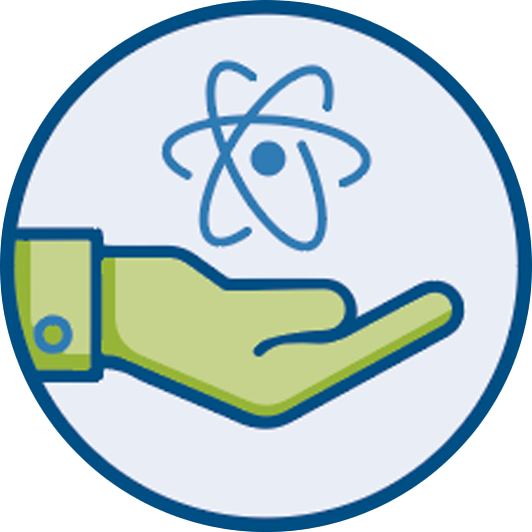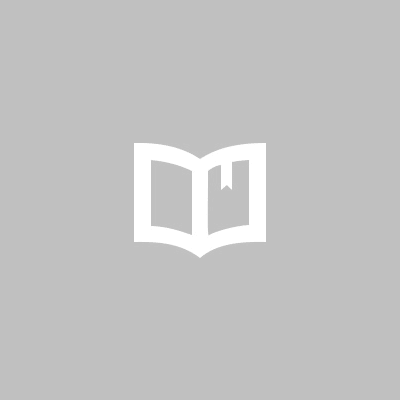
Project story: Riga's experience in bringing circularity to life
28 March 2025
Riga Energy Agency (REA) is the implementer of the “Creative and Circular Cities” project in Riga. The agency is responsible for implementing circular economy principles in the city and participates in several international projects dedicated to circularity. In this interview with Ieva Kalniņa, REA’s international project manager-coordinator, you will learn more about the creation of a circular outdoor space in Riga’s district Bolderāja and the engagement of citizens in all stages of this project. The conversation also touches upon the Circular Economy Forum the agency is organising this autumn and sources of inspiration in other Baltic Sea region cities, which have allowed Riga to better understand the principles of community involvement and to establish the Collaboration space “Sadarbnīca” in its current form – as a platform for events about circular economy and a workshop where every resident, under the guidance of a craftsman, can repair things or make something new.
Bolderāja is an industrial district of Riga, with a population of around 12,000, located about 12 km from the city center. The majority of the population are Russian speakers. Considering its remote location, it is especially important that the district has places where residents can meet and enjoy cultural events. The Bolderāja library and its surrounding area could become such a place. At the beginning of this year, REA organised a resident idea competition for the design of the library garden in Bolderāja. The residents sent in 11 applications revealing their creativity – hammocks in the trees, an introvert’s corner, a monument to the book, houses in the trees, and a shipping container as a stage to name just some of them. Taking into account the needs of the residents, a procurement for the garden design has just been announced. If everything goes as planned, the garden in its new shape will be opened in October this year.
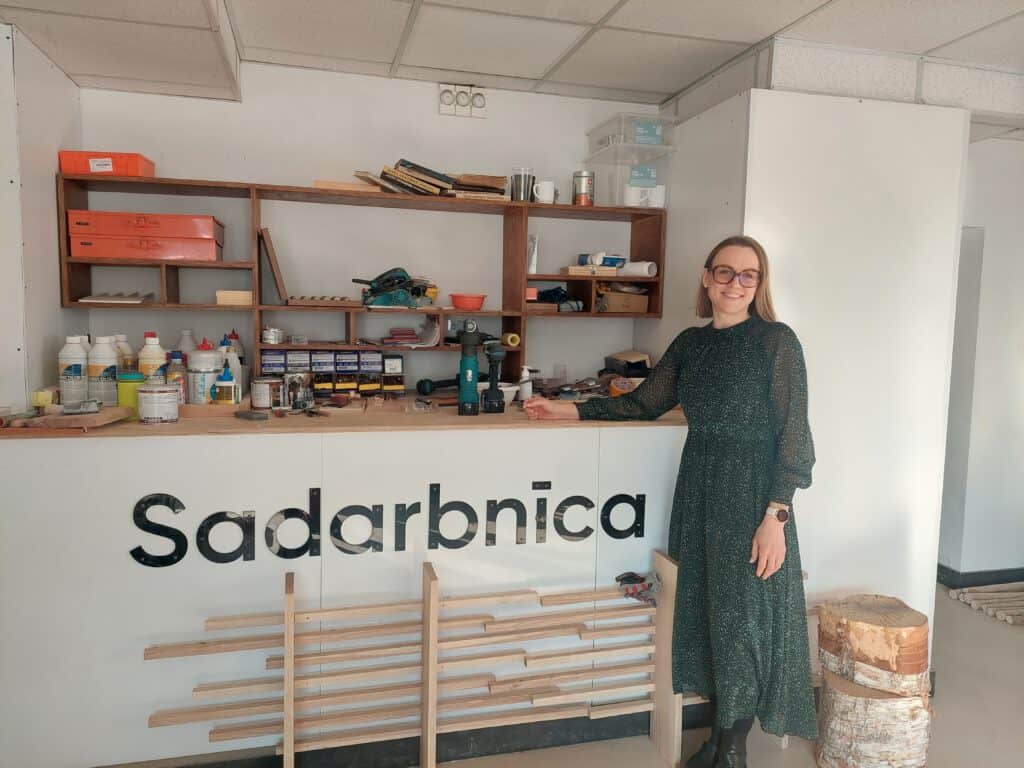
Ieva Kalniņa at the premises of the collaboration space Sadarbnīca, © DCI
Will you implement any of the residents’ submitted ideas when designing the garden?
Initially, we thought we would, but last year, while setting up the Sadarbnīca space, we realized that we wouldn’t implement the submitted ideas one-to-one. The residents’ ideas helped us to understand what they want to see in the garden. We haven’t included the ideas as a mandatory requirement for potential contractors, but rather as a recommendation, because in the circular economy functionality and materials come first and design follows. If we were to specify the design and specific technical solutions, we would exclude variations of better materials and solutions, ignoring material availability.
In the procurement process, we defined the functionality – to create a multifunctional event space with at least 50 seats and two outdoor reading areas with a specific capacity. The contractor will search for materials and create the final landscaping design, applying the most suitable technical solutions. For example, the winners of the residents’ idea competition proposed creating a stage from a shipping container in the garden; however, it is possible that the contractor will say that they have wonderful timber available and can achieve the same functionality with other materials. We provide that flexibility.
Procurement within a circular economy system differs quite significantly from regular procurement. What are the mandatory conditions that you included in the procurement?
Usually, the design is created first, and materials are selected for it, which are available in a wide range and color variations. However, if we want to reuse materials, the situation is completely different. Materials, their textures, colors, volumes, and availability must be alligned. There are no catalogues with color and size variations in this case. However, considering all the principles of the circular economy, reuse of materials is not the only solution. There are also circular economy principles that the designer can implement in the usage phase – so that the item is multifunctional, easy to maintain, durable, has replaceable parts, and is easy to disassemble into components if it needs to be used in a different way or recycled after its service life. There are many principles, and sometimes they can be implemented more successfully with new materials. If the design better embodies these principles with new materials, that works for us too. During the workshop setup, the architects had collected many materials, and we asked them: “What will you be?”. It’s a creative process.
What was your experience with community involvement in this project, and was the practice used something new for your agency?
At the closing event of the idea competition, a representative of the winning team explained how their ideas came about, what the creative process and considerations were. Residents had invested a lot of thought and work into preparing the application. Moreover, how diverse these ideas were! From very simple to very complex applications. The applications were also very diverse in terms of content. And there were things that we hadn’t even thought would be important, such as the aspect of patriotism.
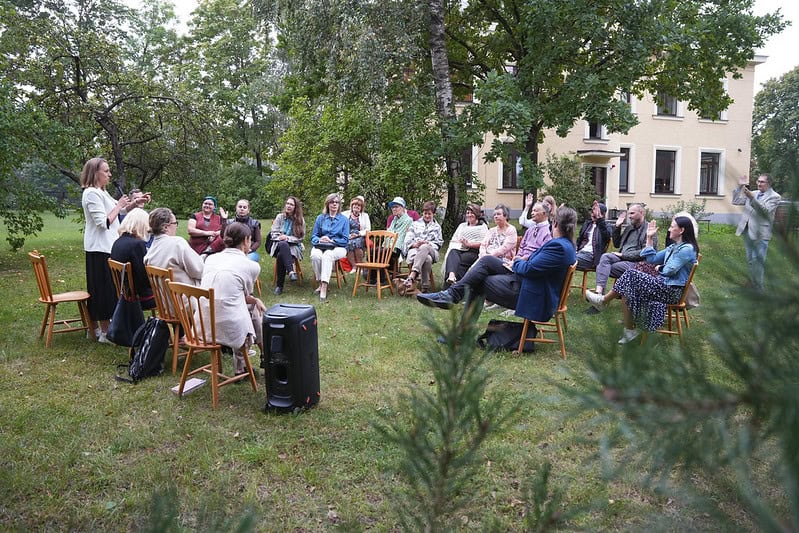
Meeting with the residents of Bolderaja suburb in Riga, September 2024, © Rīgas dome
What were the stumbling stones or surprises in the community engagement process?
We had a very difficult time conveying information to the residents – understanding which channels to use to reach them, because it turns out that putting up posters in the city is not so easy. Therefore, we relied on the Riga City Council’s Facebook accounts. They have many followers, but are they specifically from Bolderāja? It’s as if we immediately say – only those who use Facebook can participate, only those who follow Riga’s account, only with them do we work. In order not to limit the circle of people so much, we also reached out to residents through the library. Our experience shows that personally addressing residents during events works very well, but doing it in a meaningful and thoughtful way is very time-consuming. If it were possible, I would probably set up some kind of pop-up stand in the center of Bolderāja, some kind of event. We also talked about the competition through professional organizations, through associations, the neighborhood coordinator shared it on their channels.
What is the desired long-term outcome for the Bolderāja library garden project?
I definitely see it as an actively used space where people enjoy nature. And that’s another aspect. Until now, we saw the library garden area as a beautiful, green, unused space where events could take place in a more organized environment, but when we started listening to the residents, there was a very strong call to protect nature and a desire to enjoy nature. Therefore, we see that quieter events, or even simply the opportunity to use the library’s services in a green, pleasant environment, are more suitable for the garden than loud parties with several hundred participants. School classes will also come for outdoor lessons. It will be a lively, noticed, appreciated place where people come and treat what is there with respect, because they themselves will have participated in its creation. We would like to see that as a pleasant side effect – that local residents see that they can get involved, and it is also their environment to be in.
Returning to what will happen next. Please tell us very briefly about the next steps that are still expected this year.
We hope for a successful procurement outcome, and that we will start landscaping work in the summer. It sounds simple, but in reality it involves much more. The service provider will have to prepare a design concept, their vision. They will coordinate their vision with us, with the library, and then present it to the residents. So the residents will once again have the opportunity to express their opinion and be heard. During the implementation, the gates will be open and residents will be able to come and help, learn, watch, follow along, it’s an open-format landscaping. This is something new, it hasn’t been like this before. This time, it is a requirement included in the procurement – the contractors must allow people to get involved. Therefore, it will be continuous involvement of local residents from idea to implementation. The plan is to complete everything by the middle of April next year.
If we talk about other future activities in the “Creative and Circular Cities” project, we should mention the Circular Economy Forum, which will take place on November 5th or 6th. It will be a national level event with the involvement of several partners. There will be international and local speakers, ministries will participate, the Latvian National Theatre, and the Nordic Council of Ministers has also joined the organizers.
What have you gained from the international cooperation in the “Creative and Circular Cities” project?
We have definitely gained a lot. I could say that Turku’s experience is an absolute source of inspiration for our circular economy breakfasts, which were launched at the end of February and will continue regularly. Each time there will be a different theme. In the first event, we talked about greenwashing, eco-labeling, and hazardous chemicals in construction. From the creative industries, the target audience was architects.
Another source of inspiration is the Aarhus “Dome”. Our collaboration space Sadarbnīca could have been created without seeing it, but it definitely gave us additional inspiration. It is an example that demonstrates that such a place is needed and it is truly used meaningfully. The Aarhus “Dome” even has a cafe. And when there is internet and coffee, people come.
The outstanding experts are definitely a benefit as well. From all the international projects, these are the most valuable experts I have met. Consultations with Jako Blomberg and Viviana Doumpa changed our approach to the Bolderāja garden project, and with their help, we developed community engagement plans. The experts gave us confidence that we could do it; they themselves have accomplished a lot. I also refer a lot to the ideas and recommendations of expert Pelle Guldborgh Hansen – they have changed our work in other projects as well. We also had completely different ambitions regarding the Circular Economy Forum, we thought we could immediately work with businesses and invite them to prepare action plans, but expert Jasper Steinhausen recommended a different path. Initially, “market preparation” is needed, you need to inspire, show that someone has already succeeded, and he also recommended attracting large market players at the beginning.
All the expert recommendations, all of this has enriched us, and we use it not only in this project but also in others.
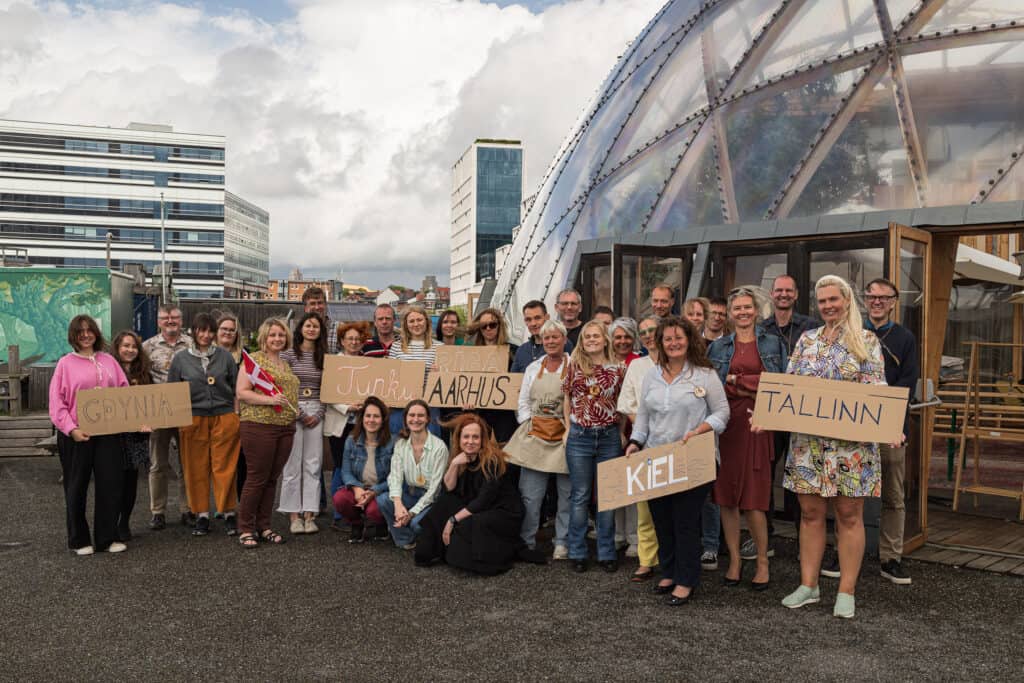
CCC Business Lab in the “Domen”, Aarhus, June 2024, © DCI
How is the creative sector involved in the project? Where is the creative aspect manifested?
We understand creativity broadly in this project. We have close cooperation with the National Theatre, with the Gertrude Street Theatre, they are currently preparing policy recommendations, and we are also trying to hear what interests them. The National Theatre is creating a circular performance this year. We discussed a material and prop exchange point. They would like the municipality to coordinate it, where artists and art students could get involved. This is again a question of infrastructure and resources, maybe the Academy of Culture, the Ministry of Culture could be involved. We have a dialogue with this sector. We have never cooperated with the Ministry of Culture, but now we have opened a dialogue with them. We are also cooperating with the Architects’ Union regarding the procurement for the library garden design. Creativity is definitely manifested in the residents’ ideas. We can also talk about culture in the aspect of behavioral culture.
Could you please tell us a little about the Collaboration Space Sadarbnīca where we are currently located?
The Collaboration Space is a platform for our co-creation arena, the creation of which was planned within the project.
Our goal is to ensure that when people think about the circular economy in the city, they intuitively think of this place, and also know about the opportunity to express themselves and learn something new at the circular economy breakfast on the last Friday of the month. We currently have bookings for the space even into September, October, and November. The space can be used by anyone free of charge, provided that it is not an internal meeting of an institution, and that the purpose of the event is related to the circular economy, sustainability, and it must not be a paid event.
There is also the opportunity to use the workshop. Do people sign up, use it?
Yes, very actively. We offer space, tools, advice. People come with their own materials – either with an object, a piece of furniture that needs to be repaired, or with raw materials. Whether it’s varnishes, sandpaper, a respirator – those are individual, but everything else that is in the workshop can be used. You have to register in advance to reserve a spot, and also so that we can assess whether the idea is feasible here.
How informed are Riga residents about the concept of the circular economy and what they themselves can do? What is your impression?
The impression depends on the bubble you live in. Since a third of Latvia’s population lives in Riga, we encounter the entire spectrum. We have a sufficient flow of people who support the ideas of the circular economy. People’s motivations are very diverse. One of the motivators – working in the workshop is like therapy. People come with things that have historical value and come with simpler items just because they can be repaired. For example, a set of stools from the nineties, which didn’t have much value, was restored here. With a little work in the Workshop, the owners gave them a modern look and a new life. Someone needs to repair a chair, reupholster fabric parts, they also come with larger objects, but they bring them in parts. So there is demand!



